| |
| |
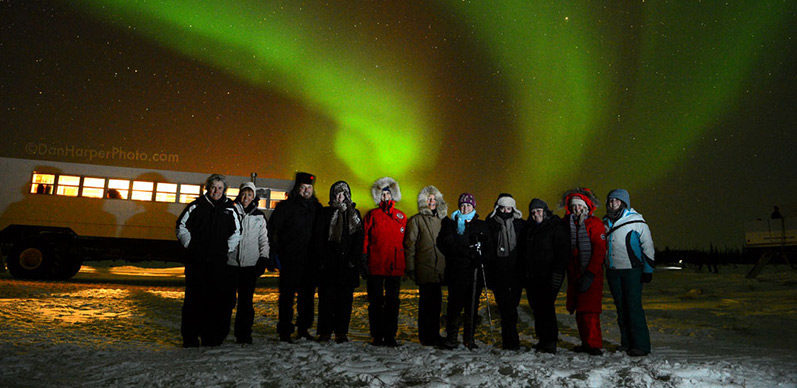 |
|
| |
North American journalists gather for a group photo near Churchill, Manitoba at 2:00 a.m. Photo by Dan Harper |
|
Do you use a camera? Do you have that bucket list of places you’d love to visit, shoot and share?
Have you ever dreamt about photographing one of the most remarkable phenomena on this planet, the Northern Lights?
Well, I’m going to let you in on a secret. You can. You really can do this.
Travel Manitoba http://media.travelmanitoba.com can explain how.
Amateur, adventurer, sometime photographer, professional staffer for Nat Geo, whatever your status on that continuum or station along the photographer’s highway, just charge your batteries (as many as you can muster), clear your chips, (as many as you can afford), grab your tripod (or borrow one from a pro) and whatever gear you happen to have and sign in withTravel Manitoba and Frontiers North Adventures for a dynamic introduction and adventure first to Winnipeg and then to Churchill.
First, you’ll get the PD session in Winnipeg at The Museum Manitoba http://www.manitobamuseum.ca with a professional photographer/astronomy expert before you head out to the Churchill Tundra. Bring all your gear, including your tripod, to this pre-session at the Museum. They’ll give you tips and tricks and settings so you’ll have information and the opportunity to practice trying to get the best shots. Spectacular shots. They may not big prize-winners, but, hey, you never know.
| |
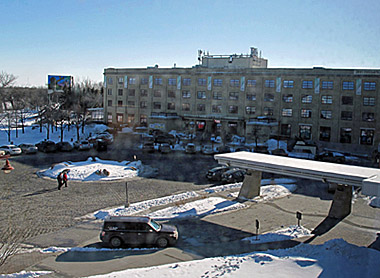 |
|
Best plan is to start your visit to Churchill with a couple of overnights in Winnipeg where you can seamlessly zip from the airport via UNICITY TAXI, right outside the door opposite the baggage claim area, to The Inn at the Forks right on the junction of the Red and Assiniboine Rivers. This is a National Historic Site of Canada and also the future site of the Canadian Museum for Human Rights.
The Current Restaurant in-house dining at The Inn at the Forks leaves no desire unattended. The food is fabulous. |
|
| |
Winnipeg's Inn at the Forks |
|
|
|
| |
|
|
|
|
| |
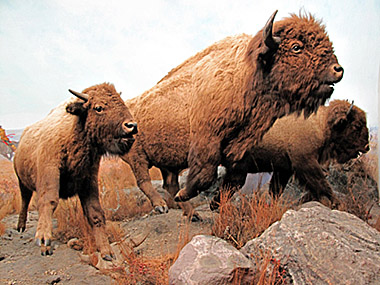 |
|
Most important, after yum yum breakfast at Inn at the Forks, cab it over to the Manitoba Museum for a full or half-day program that will introduce you to a photo clinic in the morning coupled with a session on the Inuit People and a museum tour in the afternoon, lunch included. You can also choose to participate in just the morning photo clinic. Details below. |
|
| |
Bison diorama at the Manitoba Museum |
|
|
|
Both of the Manitoba Museum programs described above are designed for groups for no fewer than 4 people (see details for larger groups) and must be booked at least 5 days in advance. The rates, links for booking and more information follow:
Explore the North: Photo Clinic Aurora Show and Inuit People
$42 adults; $39 youth/senior (based on 10+ paying customers)
$55 adults; $51 youth/senior (if fewer than 10+ paying customers)
Explore the North: Aurora show & photo clinic only
$21.85 adults; $20.50 youth/senior
http://www.manitobamuseum.ca
Here are some yes/no/don't bother equipment tips:
| |
|
|
|
|
|
|
|
|
|
|
|
|
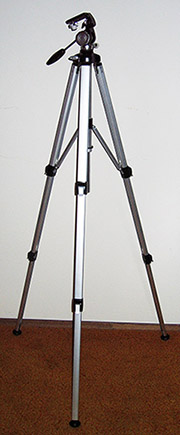 |
Monopod...probably not a perfect solution, but better than nothing...and light weight.
|
|
Woody...too heavy and so yesterday, but just might work. Has two bubble levels, good if you can see them in the dark. |
|
Gorilla for flip...no, never mind. Technology for video not there yet.
|
|
Aluminum Bushnell...has ice-poker tips, a light weight, entry-level tripod with forgiving features. This is what I used. |
| |
|
|
|
|
|
|
| |
 |
|
 |
|
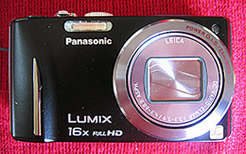 |
|
| |
Samsung Smartphone - Don't bother
|
|
iPad - Also don't bother
|
|
Panasonic Lumix - $200. A great all around back up camera, but not your best choice for your best Northern Lights images. |
|
| |
|
|
|
|
|
|
| |
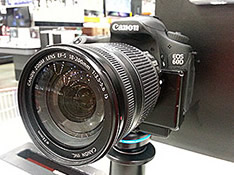 |
|
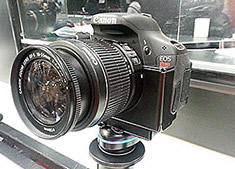 |
|
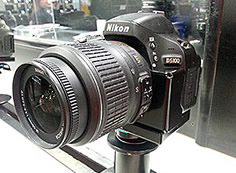 |
|
| |
Canon EOS 60d - This entry level professional camera (more than $1,000) could capture some stunning Northern Llights images. |
|
Canon EOS Rebel - $800. You could shoot an award-winning image with this work-horse camera.
|
|
Nikon D5100 - $800. Another possibilty for some stuning images.
|
|
| |
|
|
|
|
| |
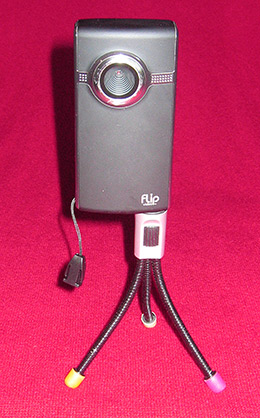 |
|
|
|
| |
Don't bother with a Flip camera on a Gorilla tripod. Video technology can't capture the northern lights, but they're working on it. |
|
Canon G10 - $500. This is one of the cameras professional photographers use for back-up and is what I used to shoot the Northern Lights shots that are in my story. Great for stills, but doesn't have the capacity for long time-lapse. |
|
Here are some tips you can expect from the Manitoba Museum Photo Clinic Workshop with a resident photographer/astronomy expert.
-
If you want to capture images of the Northern Lights, it’s best to have some experience as an advanced amateur with at least an advanced amateur camera. You ought also to be extremely familiar with all your camera gear, including your tripod. Yes, you will definitely need a tripod, preferably with digger points on the feet to poke into the icy surface of the tundra as you will be on the ground in the dark.
Your main settings will be on manual and exposure setting should be at least 30 seconds, but better if your camera allows up to three minutes. If you have a remote, infrared cable, this keeps you from touching the camera to click the shutter when you want to shoot. If you don’t have a remote cable, you can also set your timer down to a couple of seconds so that when you push the shutter button the camera doesn’t move when it’s taking the time exposure.
-
Batteries die quickly in the -40C temperatures near the arctic circle, so bring as many as you can. Keep them close to your body to keep them warm. When they die, put them inside your coat, warm them up and then they may work again when you put them back in the camera.
-
Regarding the shutter setting, some cameras have scene settings: Starry sky, night sky, fireworks. Never set your camera on starry portrait as it will take a picture of a close up object with a flash, thinking that what you want is a portrait of a close by person in the dark and not the Northern Lights far away.
-
Also keep your ISO setting as high as the camera will allow, if your shutter speed is low. If you have noise reduction settings, use that as well. Turn down the screen brightness (LED) so as not to contribute to light pollution around you.
| |
These are pix taken at the Manitoba Planetarium with minimal settings with a point and shoot and no tripod. Good practice with no minus temps. |
|
So, to reiterate: The most important settings to remember:
-
ISO setting is important depending on your aperture. This varies greatly depending on your camera, so start low and raise it if your shots are too dark.
-
Aperture setting wide open as possible.
-
Adjust shutter speed to 30 seconds and up to three minutes.
-
Set your file capture type to RAW. You can shoot in RAW and JPG, but RAW files capture the richness of the night mo’better.
Other suggestions include wearing thin, insulated gloves so you can work the settings on your camera and adjust your tripod and other gear without finger frostbite.
Mittens with Hotties are de rigeur, but have glove liners underneath so you can take them off and make adjustments out on the tundra. Mittens with wrist straps are also a help so you don’t have to worry about losing them when you need to take them off for camera adjustments.
A head lamp is critical so you can check your settings. Remember, IT IS DARK. A head lamp with a prominent sitck-out toggle switch rather than a recessed button is the best since you’re trying to operate switches in gloves. Covering the light source with a piece of red cellophane or plastic reduces light pollution for those around you trying to capture photos. If you don’t have a headlamp, a small flashlight works as well.
Warm clothing and footwear suggestions go without saying: balaclava, hat, polar coat with hood, neck gaiter that can be pulled up over your face and nose, ski pants with thick fleece and heavy wool sox in either Sorrels or rented boots. You can easily rent boots, jackets, pants and any other clothing you need in Churchill. $15 a day for boots saved my trip and that’s my suggestion. Ordinary ski gear or winter snow bunny boots won’t keep you warm. Sometimes the wind can be many MPH.
By the way, these gear suggestions also apply for people who are not advanced amateur or professional photographers who are planning a Churchill trip in winter. Trust me. You’ll be much more comfortable if you’re warm.
| |
As you can see, images taken with a consumer point and shoot out on the tundra are noisy and not crisp. But they’re documents of the amazing expereince of witnessing the Northern Lights. The image on the left is quite noisy and has been photoshopped. The picture on the right is an unadorned-by-photoshop, virgin image that one could see with the cold naked eye. |
|
The experience in Churchill just may be life-changing, and the images priceless. What’s to lose?
Did I mention to also bring everything warm you own? Northern Lights season is in the “bit nippy” season, Feb-March (check the season chart for northern lights) and you’ll be outside (yes, in the below zero temps) viewing/shooting from probably around 10pm to 3am, depending on the weather. Everything in Churchill depends on the weather.
Churchill is located directly below the Auroral Oval, one of the best places in the world to view (and shoot) the Northern Lights. Even if you’re not a photographer, just bring a camera (point-and-shoots allowed), try to follow the simplest of suggestions and marvel at the wonder of Mother Nature’s Aurora Borealis. Surrounded by truly astounding landscapes and wildlife, Churchill continues to make a dent on tourists, veteran travelers, photographers, amateurs and professionals from around the globe.
| |
Downtown mainstreet Churchill can be a lonely stroll at -49F with wind chill factored in for a visit to the Northern “everything” store where you can buy everything from a snowmobile for I don’t know how much, to a gallon of milk for $10 and a loaf of Wonder Bread for $5. The iconic Inuckshuck on the shores of Hudson Bay is where everyone goes to have their Churchill pictures taken. |
|
| |
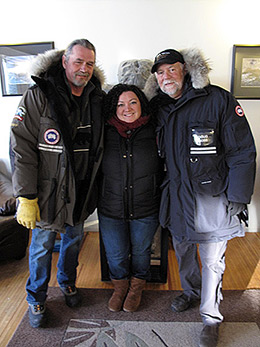 |
|
Our guides, who work with Frontiers North Adventure, were and continue to be (parden the overused qualifier) absolutely awesome. They are, left to right:
Rob Debets, skilled driver of the Tundra Buggy, fabulous server of hot soup on the tundra, knower and keeper of all details and gentleman par excellence.
Tricia Schers, cheerleader, jokester and absolute fountain of knowledge regarding all our comfort needs and any of our Qs, the most delightful companion you would ever wish for on this trip to the coooooold arctic.
Doug Ross, THE go-to expert on details about the environment, the weather, the temperature predictions, the geography, the history...Doug’s your Wickipedia.
We had an amazing trio of guides who were with us the entire time in Churchill. You will not be disappointed boooking a trip with Frontiers North Adventure. |
|
| |
|
|
|
|
| |
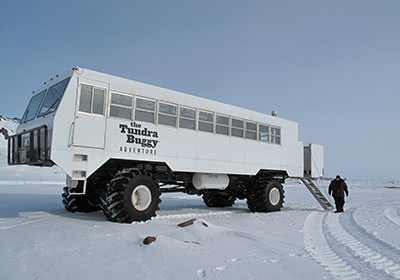 |
|
| |
Our transportation and warm respite on the tundra |
|
| |
Cathy Senecal of Travel Manitoba |
|
Gypsy's hot soup in the Tundra Buggy |
|
| |
A great place to stay in Churchill is The Tundra Inn where the van is always left running and warm outside and where included breakfast is a community event. The best nightcap is apres Northern Lights late night/early morning photograpy when your fingers are near frostbite and all you need at 3 AM is a Baileys in a cup of hot coffee and some commisseration with colleagues in the common room lobby. |
|
| |
And great places to eat in Churchill are the Seaport Hotel and Restaurant and at Gypsy’s, where owner Helen and son Phil serve your every whim. “I was born in Portugal, raised in Portugal, moved to Winnipeg, my sons were born in Winnipeg and now I’m here so I can take care of you.” And that Helen certainly does with great style, service and fab food. Everyone gathers at Gypsy’s, for the food, the company and the welcoming spirit of the owners. |
|
| |
|
|
| |
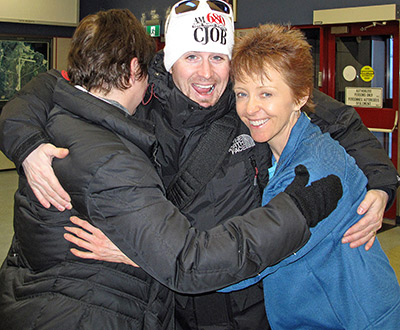 |
|
| |
Fab Fotog Dan Harper saying goodbyes to journalists Cheryl-Anne Millsap and Paula Felps. We’ll all definitely be back to Manitoba and Churchill, chasing the Northern Lights. |
|
BTW, if you happen to visit Churchill during polar bear season, the local “warning” for a nearby siting and approaching bear we’re told is: “There’s a pizza delivery.”
And look for Yvette Cardozo’s piece on Churchill in our next issue of highonadventure.com. She is an expert, knows everyone in town and just traveled there for her ninth visit.
Travel Manitoba http://media.travelmanitoba.com
Frontiers North Adventures http://www.frontiersnorth.com
The Manitoba Museum http://www.manitobamuseum.ca
Dan Harper, photographer: http://www.DanHarperPhoto.com/
|
|